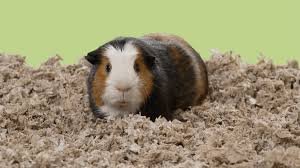Introduction
Small animals from hamsters and gerbils to fancy mice, guinea pigs, and small rabbits bring surprising joy, companionship, and life lessons into a home. Although they’re small in size, their needs are specific and require thoughtful planning, consistent care, and a basic understanding of animal welfare. This guide is written with principles in mind: practical, evidence-minded advice that encourages consulting qualified veterinarians when health or behavior issues arise. Whether you’re a first-time owner or upgrading your pet-care skills, the information below covers choosing the right species for your lifestyle, setting up a safe and stimulating habitat, feeding and nutrition basics, routine health checks, and enrichment to keep your pet mentally and physically thriving. Read through the sections that matter most to you, and remember small animals reward careful attention with big affection.
Choosing the Right Small Pet
Selecting the right small animal should start with an honest look at your daily routine, space, budget, and the time you can commit. Different species have different lifespans, activity cycles (nocturnal vs. diurnal), grooming needs, sociability, and handling tolerance. For instance, hamsters are often solitary and nocturnal, while guinea pigs are social and benefit from same-species companionship. Rabbits need more space and social interaction, and some small rodents require very specific dental and cage maintenance. Consider allergies, household members (young children or other pets), and noise sensitivity before deciding. Visit reputable breeders or adoption centers, ask about the animal’s health history, and request to see the animal’s living conditions beforehand. Choosing a pet that matches your lifestyle increases the chance of a long, healthy relationship and reduces stress for both you and the animal.
Housing and Habitat Essentials
A secure, species-appropriate habitat is the foundation of small-animal welfare. Cage size matters: bigger is nearly always better. Provide a well-ventilated, escape-proof enclosure with solid flooring (wire floors can injure feet), multiple hiding spots, and areas for exercise. Bedding should be dust-free and absorbent; avoid cedar and pine shavings for many species because the oils can harm respiratory systems. Add a hide house or tunnel for security, platforms or climbing branches if the species enjoys elevation, and a separate feeding area to keep food dry and clean. Temperature and humidity should be stable and within the species’ comfort range, free from direct sunlight and drafts. Clean the habitat regularly using pet-safe cleaners and remove soiled bedding daily; perform a full habitat refresh on a schedule appropriate to the species. Thoughtful housing reduces stress, prevents common illnesses, and supports natural behaviors.
Nutrition and Feeding
Balanced nutrition is critical for longevity and daily health. Small animals have fast metabolisms and species-specific dietary needs: some require high-fiber diets to maintain healthy teeth and digestion, while others benefit from a mix of commercial pellets, fresh vegetables, and safe fruit treats in moderation. Always choose high-quality commercial foods formulated for the species as the dietary baseline; supplements or human foods should be introduced only after vet confirmation. Fresh water must be available at all times in a clean bottle or heavy bowl, changed daily. Watch portion sizes overfeeding leads to obesity while underfeeding or wrong food types can cause dental and digestive problems. Learn the hazardous foods for your pet (e.g., chocolate, avocado, certain houseplants) and avoid them. If you suspect a feeding problem weight loss, diarrhea, or a drop in appetite contact a veterinarian experienced with small mammals promptly.
Health, Handling, and Wellness Checks
Preventive care and gentle, confident handling keep small animals healthy and build trust. Establish a relationship with a veterinarian who treats small mammals; routine check-ups can catch dental disease, mites, respiratory issues, and other common conditions early. Learn to recognize warning signs such as decreased appetite, changes in stool, labored breathing, lethargy, or sudden behavior shifts. Handle animals correctly: support the body fully, move slowly, and avoid sudden loud noises that can frighten them. For species that enjoy social grooming, short daily handling sessions help socialize and expose subtle health changes early. Grooming needs vary rabbits may need nail trims and occasional fur brushing, while short-haired rodents require less grooming help. For any medical concern, prioritize professional assessment rather than home remedies; many small animals deteriorate quickly if problems are ignored.
Socialization and Enrichment
Mental stimulation and species-appropriate social contact are as important as physical care. Provide chew toys to wear down continuously growing teeth, foraging feeders to encourage natural food-searching behavior, and safe tunnels or boxes for hiding and exploration. Rotate toys periodically to keep enrichment novel. For social species, pair or group housing—introduced carefully and under supervision offers companionship and reduces stress; however, monitor for aggression, especially during introductions. Training is possible with small animals through gentle, reward-based methods—use tiny food rewards to teach simple behaviors like coming to a voice cue or using a litter area. Environmental enrichment lowers the risk of boredom-driven behaviors such as excessive gnawing or fur plucking. Always ensure any enrichment items are non-toxic and sized to prevent choking.
Conclusion
Caring for small animals requires commitment, knowledge, and compassion. When matched carefully to your household, provided with a safe, stimulating habitat, and supported by proper nutrition and veterinary care, these tiny companions can thrive and become rewarding lifelong partners. Use the guidance above as a practical starting point, and always seek professional veterinary help for health or behavioral concerns. Small animals communicate subtly; learning their normal behaviors and routines is the key to spotting problems early and ensuring they live healthy, comfortable lives.
FAQs
Q: How often should I clean my small pet’s cage?
A: Spot-clean daily by removing soiled bedding and waste; perform a full clean with refreshed bedding and sanitized surfaces on a schedule appropriate to the species typically weekly for many rodents, more often for rabbits if they soil frequently.
Q: Can children handle small animals?
A: Children can be part of care but should always be supervised when handling small animals. Teach gentle handling, hand washing after contact, and that some species prefer minimal handling to reduce stress.
Q: When should I see a vet for my small pet?
A: See a veterinarian promptly for any change in appetite, stool, breathing, activity level, or if you notice wounds, discharge, or sudden behavioral changes. Early intervention often prevents serious complications.









